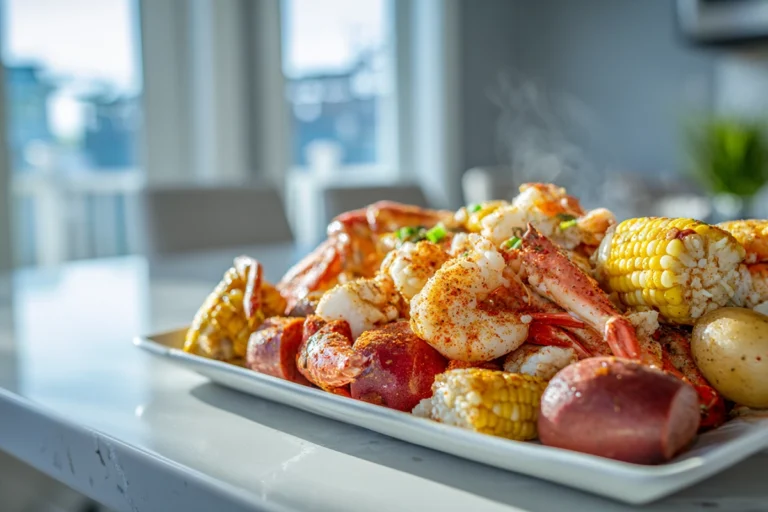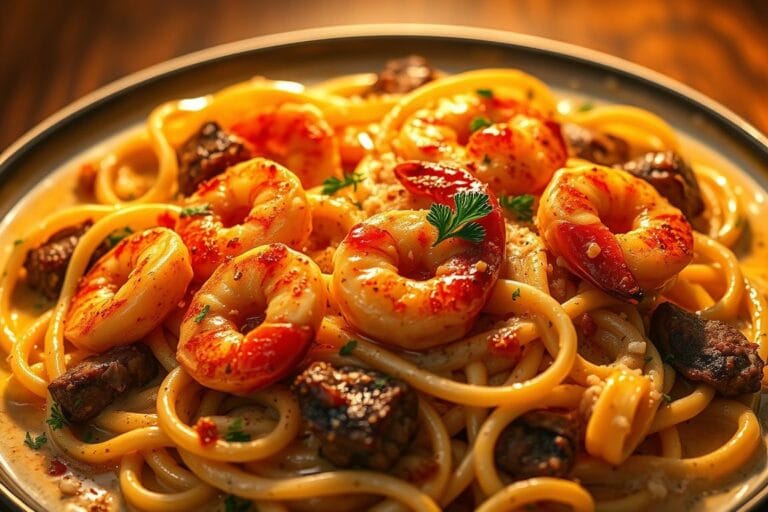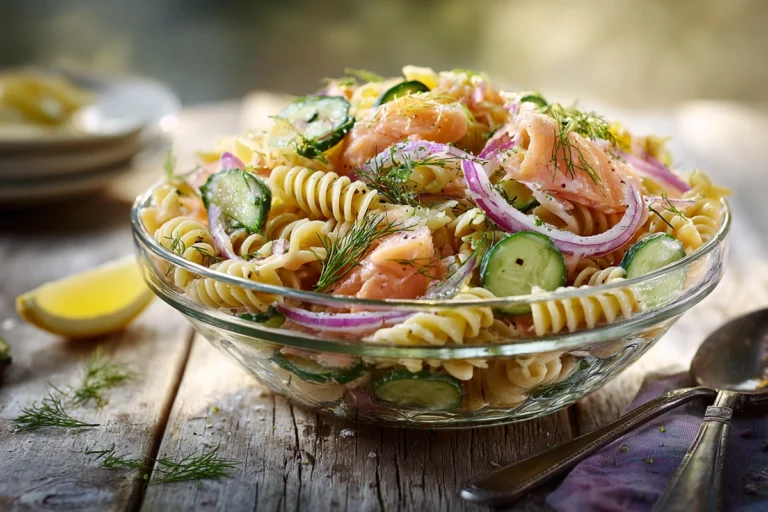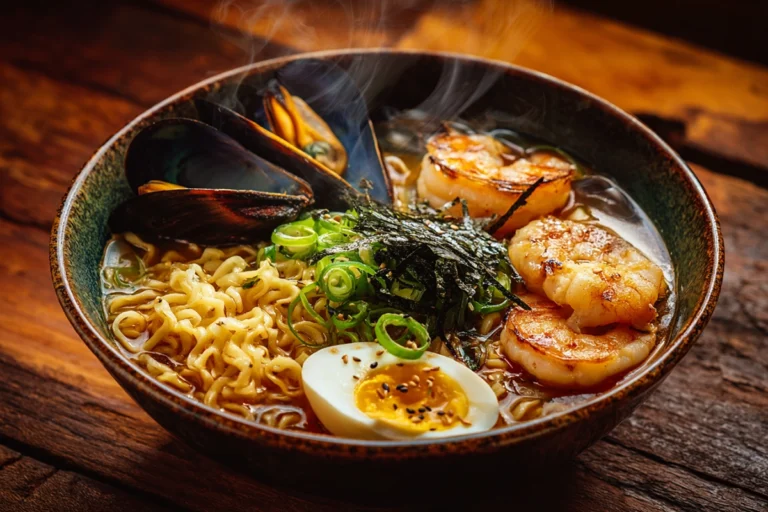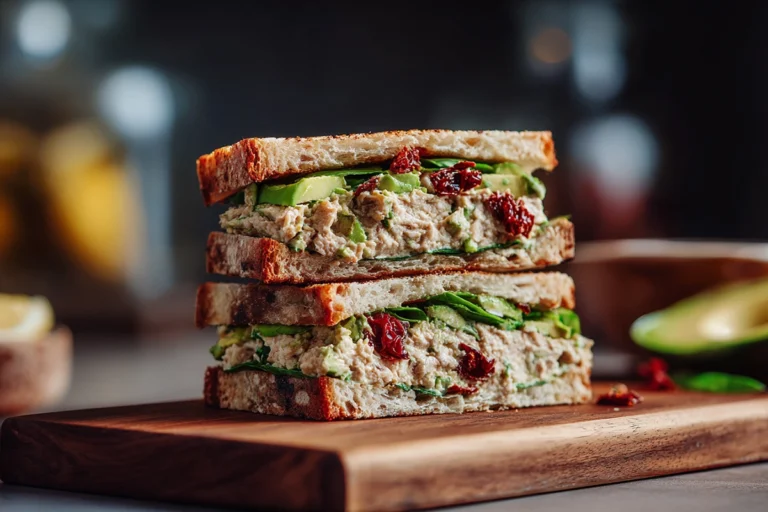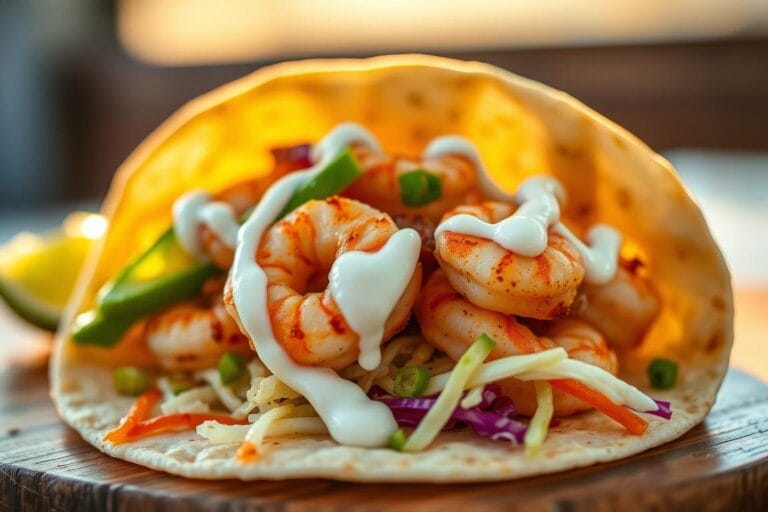Dive into the Flavors of Mexican Seafood: A Coastal Culinary Journey
Something magical about the first bite of a freshly made taco gobernador is the succulent shrimp, the melted cheese, the hint of spice wrapped in a warm tortilla. It transports me back to the vibrant streets of Mazatlán, where the aroma of sizzling seafood fills the air and every meal tells a story. Mexican seafood isn’t just food; it’s an experience, a celebration of coastal traditions and rich flavors that have been perfected over generations.
In this guide, we’ll explore the diverse world of Mexican seafood, from its regional specialties to essential ingredients, cooking techniques, and more. Whether you’re a seasoned chef or a curious foodie, a sea of flavors is waiting to be discovered.
Understanding Mexican Seafood: A Regional Overview
Mexico’s extensive coastline, stretching over 6,000 miles, offers a bounty of seafood as diverse as its regions. Each coastal area boasts its own unique dishes and culinary traditions:
Baja California
- Baja Fish Tacos: Crispy battered fish topped with fresh cabbage slaw and creamy sauces, often served on corn tortillas.
- Ceviche: Fresh fish or shrimp marinated in citrus juices, mixed with tomatoes, onions, and cilantro.
Sinaloa & Nayarit
- Aguachile: A spicy dish featuring raw shrimp in a chili-lime marinade, often accompanied by cucumbers and onions.
- Pescado Zarandeado: Grilled fish marinated in a blend of spices and sauces, traditionally cooked over open flames.
Veracruz
- Huachinango a la Veracruzana: Red snapper cooked with tomatoes, olives, capers, and herbs, showcasing Spanish influences.
- Arroz a la Tumbada: A seafood rice dish enriched with shellfish and aromatic herbs.
Each region’s approach to seafood reflects its history, local ingredients, and cultural influences, making Mexican seafood a rich tapestry of flavors and techniques.
Essential Ingredients in Mexican Seafood Dishes
The heart of Mexican seafood lies in its fresh, vibrant ingredients. Here’s a look at some staples:
Seafood Varieties
- Shrimp: Used in dishes like camarones a la diabla and aguachile.
- Red Snapper: Central to huachinango a la veracruzana.
- Octopus & Scallops: Featured in ceviches and stews.
Flavor Enhancers
- Chilies: Guajillo, arbol, and chipotle add depth and heat.
- Citrus: Lime and orange juices are essential for marinades and ceviches.
- Herbs: Cilantro and oregano bring freshness and aroma.
Accompaniments
- Tortillas: Corn tortillas are a staple, serving as the base for tacos.
- Avocados: Add creaminess to dishes like ceviche and tostadas.
These ingredients combine to create Mexican seafood cuisine’s bold and balanced flavors.

Popular Mexican Seafood Dishes to Try
Embarking on a culinary journey through Mexican seafood? Here are some must-try dishes:
Camarones a la Diabla
Spicy “deviled” shrimp cooked in a fiery red chili sauce, often served with rice and tortillas.
Tacos Gobernador
A Sinaloan specialty featuring sautéed shrimp, melted cheese, and peppers tucked into a crispy tortilla.
Aguachile
A refreshing yet spicy dish of raw shrimp marinated in lime juice and chilies, garnished with cucumber and onion.
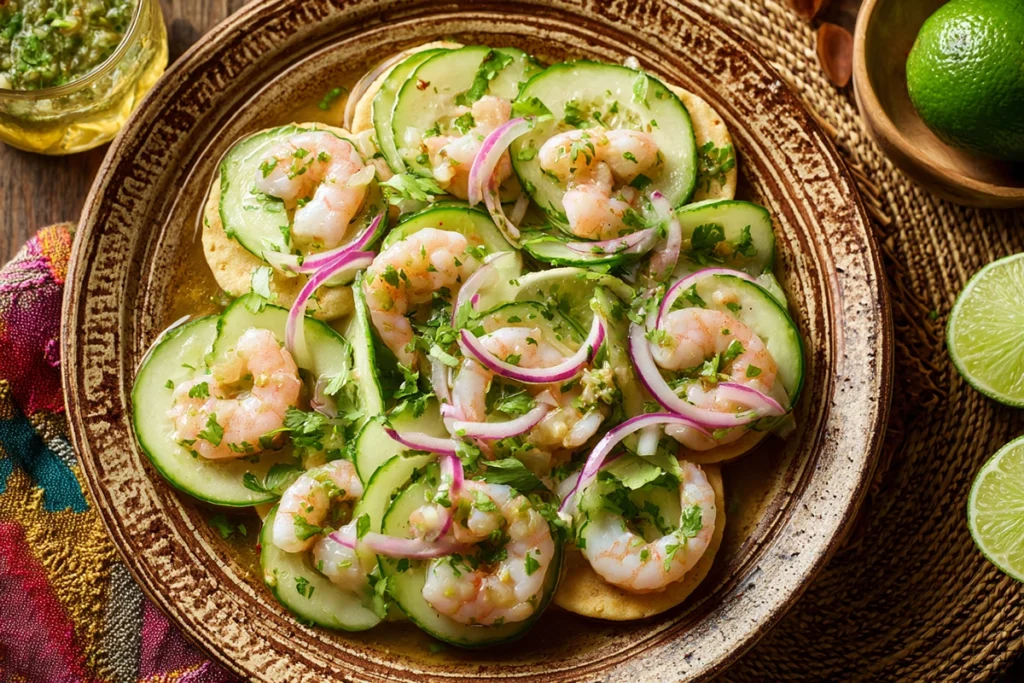
Pescado Zarandeado
Grilled fish marinated in spices and sauces, traditionally cooked over open flames.
Huachinango a la Veracruzana
Red snapper baked with tomatoes, olives, capers, and herbs, reflecting the Spanish influence in Veracruz cuisine.
Each dish offers a unique taste of Mexico’s coastal culinary heritage.
Cooking Techniques and Tips
Mastering Mexican seafood involves understanding its traditional cooking methods:
Marination
Citrus-based marinades “cook” raw seafood in ceviche and aguachile, infusing them with bright flavors.
Grilling
Open-flame grilling imparts a smoky flavor, essential for dishes like pescado zarandeado.

Sautéing
Quickly cooking seafood in a hot pan, as in Camarones a la Diablo, ensures tenderness and flavor retention.
Use of Traditional Tools
Cooking with a comal or plancha—flat griddles—adds authenticity and enhances flavor through even heat distribution.
Embracing these techniques brings out the best in Mexican seafood dishes.
A Step-by-Step Guide to Cooking Simple Mexican Shrimp
If you’re new to cooking seafood, shrimp is a great place to start. It’s fast, flavorful, and easy to season. Here’s a basic way to cook Mexican-style shrimp at home.
Step 1: Prep the shrimp
Start with one pound of peeled and deveined shrimp. Pat them dry with a paper towel. This helps them cook evenly and get a better sear.
Step 2: Make the marinade
Mix the juice of two limes, two minced garlic cloves, one teaspoon of chili powder, and a pinch of salt in a bowl. You can also add a splash of oil. Let the shrimp sit in this marinade for 10 minutes.
Step 3: Heat the pan
Place a large pan over medium-high heat. Add a tablespoon of vegetable oil (or olive oil). Once hot, add the shrimp in a single layer.
Step 4: Cook quickly
Shrimp cook fast—about 2 minutes per side. When they curl and turn pink, they’re done. Avoid overcooking. The marinade will caramelize slightly in the pan.
Step 5: Finish and serve
Squeeze fresh lime juice over the shrimp. Sprinkle with chopped cilantro. Serve with warm tortillas or over Mexican rice for a quick meal.
This basic method uses traditional Mexican seafood techniques: marinating with citrus, pan-searing, and fresh garnishes. It’s perfect for a weeknight dinner or to impress guests with something easy yet flavorful.
Side Dishes and Accompaniments
Complement your Mexican seafood meals with these traditional sides:
- Mexican Rice: A flavorful side that pairs well with spicy seafood dishes.
- Refried Beans: Creamy beans that add richness and balance.
- Pico de Gallo: A fresh salsa of tomatoes, onions, and cilantro.
- Guacamole: Creamy avocado dip that cools the palate.
- Tortillas: Warm corn tortillas are perfect for scooping or wrapping.
These accompaniments enhance the dining experience, offering texture and flavor contrasts.
How to Build a Balanced Mexican Seafood Plate
Start with a main dish like spicy shrimp or grilled fish. Add a scoop of Mexican rice for flavor and color. Include refried beans or black beans for protein and texture. A spoonful of pico de gallo or guacamole adds freshness. Warm corn tortillas make everything easy to eat. Keep lime wedges on the side for brightness. This mix gives you bold flavor, balance, and an authentic taste of Mexican seafood. It’s simple, satisfying, and perfect for sharing with family or friends.
Storing and Reheating Mexican Seafood
Proper storage ensures the freshness and safety of your Mexican seafood dishes:
- Refrigeration: Store cooked seafood in airtight containers at 40°F or below.
- Freezing: Freeze seafood promptly if not consuming within two days.
- Reheating: Gently reheat seafood over low heat to prevent overcooking.
Before consuming leftovers, always check for signs of spoilage, such as off-odors or sliminess.
Health Benefits of Mexican Seafood Cuisine
Incorporating Mexican seafood into your diet offers numerous health advantages:
- High in Protein: Supports muscle growth and repair.
- Rich in Omega-3 Fatty Acids: Promotes heart and brain health.
- Low in Saturated Fats: Aids in maintaining healthy cholesterol levels.
- Abundant in Vitamins and Minerals: Provides essential nutrients like vitamin D and selenium.
Enjoying these dishes delights the palate and contributes to overall well-being.
Exploring Mexican Seafood Beyond the Plate
Mexican seafood is deeply intertwined with the country’s culture and traditions:
- Festivals: Coastal regions celebrate seafood through events like the Festival del Marisco, showcasing local dishes and culinary talent.
- Culinary Tourism: Cities like Puerto Vallarta and Mazatlán attract food enthusiasts eager to experience authentic seafood cuisine.
- Family Traditions: Recipes are often passed down through generations, preserving the rich heritage of Mexican coastal cooking.
Engaging with these cultural aspects offers a deeper appreciation for the flavors and stories behind each dish.
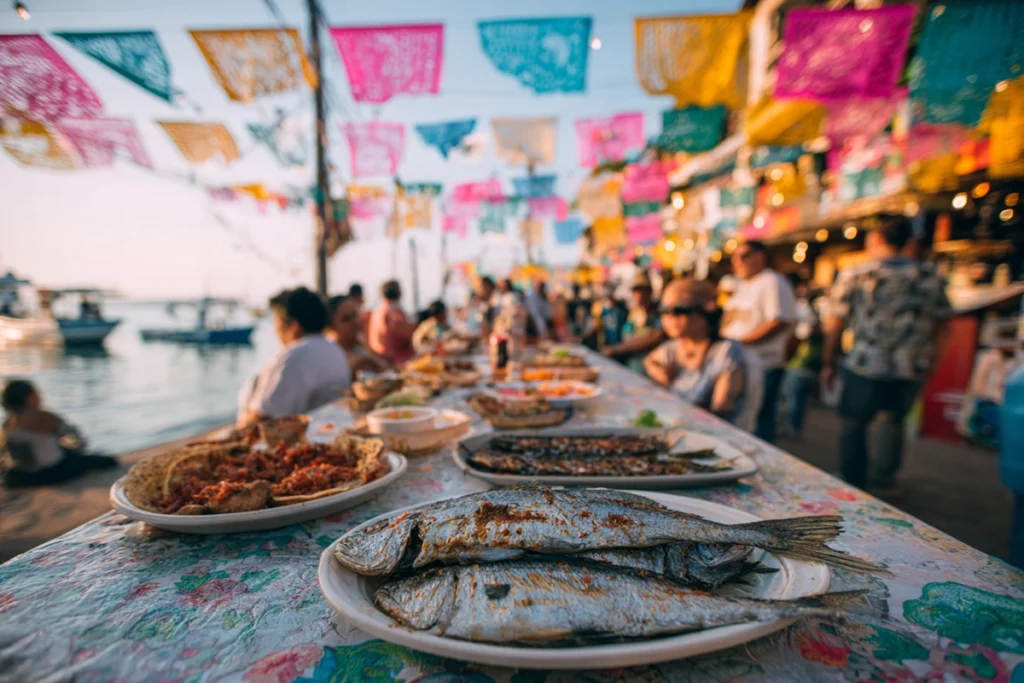
Embarking on a journey through Mexican seafood is more than a culinary adventure—it explores vibrant cultures, time-honored traditions, and the rich tapestry of flavors that define Mexico’s coastal regions. Whether savoring a spicy Camarones a la diablo or a refreshing agua chile, each bite tells a story of the sea, the land, and the people who bring these dishes to life.
FAQ
What is the difference between ceviche and aguachile?
Ceviche typically involves marinating seafood in citrus juice for an extended period, allowing it to “cook” in the acid. Aguachile, on the other hand, is prepared quickly, with raw shrimp submerged in a spicy chili-lime sauce just before serving, resulting in a fresher, spicier flavor.
Can I use frozen seafood for Mexican recipes?
Yes, frozen seafood can be used, especially if fresh options are unavailable. Ensure it’s properly thawed in the refrigerator and pat it dry before cooking to achieve the best texture and flavor.

Dive into the Flavors of Mexican Seafood: A Coastal Culinary Journey
- Total Time: 30 minutes
- Yield: 4 servings 1x
- Diet: Gluten Free
Description
This flavorful Mexican seafood recipe combines spicy shrimp, vibrant vegetables, and traditional seasonings in a sizzling dish called Camarones a la Diabla. It’s a coastal favorite that balances heat and richness, perfect for weeknight dinners or festive gatherings.
Ingredients
1 lb large shrimp, peeled and deveined
2 tablespoons vegetable oil
3 dried guajillo chiles, stemmed and seeded
2 dried arbol chiles (optional, for extra heat)
2 Roma tomatoes, chopped
3 cloves garlic, minced
1/4 onion, chopped
1/2 teaspoon salt
1/4 teaspoon black pepper
1 tablespoon ketchup or tomato paste
1/4 cup water (for blending)
Fresh cilantro and lime wedges for garnish
Instructions
Soak dried chilies in hot water for 10 minutes until softened.
Blend softened chilies, tomatoes, garlic, onion, salt, pepper, ketchup, and water until smooth. Set aside.
In a skillet, heat oil over medium heat. Add shrimp and cook for 2–3 minutes per side until pink.
Pour the sauce over the shrimp and simmer for 5–7 minutes, stirring occasionally, until the sauce thickens.
Serve hot with rice or warm tortillas, garnished with cilantro and lime wedges.
Notes
Adjust chili quantity to your spice preference.
For a milder version, use only guajillo chiles.
Pairs well with Mexican rice or guacamole.
Leftovers can be refrigerated and gently reheated.
- Prep Time: 15 minutes
- Cook Time: 15 minutes
- Category: Main Course
- Method: Sautéing
- Cuisine: Mexican
What Are Our Readers Saying?
There are no reviews yet. Be the first one to write one.


